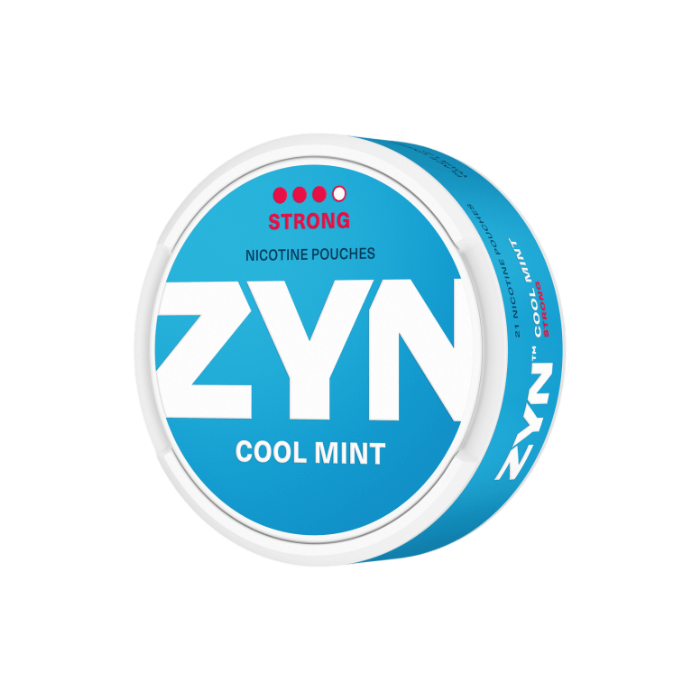Cigarettes
What Is in Cigarettes?
Cigarettes have been popular for centuries. But what is in them, and how does it affect us? In this blog post, we will examine the composition of cigarettes, how tobacco smoke affects our brains, and the potential dangers of vaping and e-cigarette use.
We will also explore alternatives for smokers, such as nicotine gum, and how nicotine photodegradation can affect nonsmokers. By the end of this post, you should have a better understanding of cigarettes and their potential risks.
The Effects Of Cigarettes
Cigarettes have been around for many years and have been controversial for just as long. While some may argue that cigarettes are harmful and addictive, they can derive some relaxing effects from cigarettes and other smoking alternatives, such as e-cigarettes and vape pens.
We will explore the benefits of cigarettes, from understanding cigarette filters and addictive substances to exploring the use of vaping products among nonsmokers and young adults. We will also look at alternatives to smoking, such as varenicline, menthol, nicotine replacement therapies, and more.
The Chemicals and Cigarette Ingredients
Do you know what’s in cigarettes? If not, you’re not alone. Cigarette smoke contains over 7000 chemicals, some of which are toxic and can be dangerous. In this section, we’ll take a closer look at some of the most common chemicals found in cigarettes and their effects on human health.
Tobacco smoke contains:
- Nicotine
- Formaldehyde
- Ammonia
- Tar
- Arsenic
- Lead
- Carbon monoxide
- Polonium
Secondhand smoke from cigarettes contains many of the same chemicals as regular smoking. It means that even if you don’t smoke yourself – smokers near you are likely exposing you to harmful toxins every time they take a puff. If you’re concerned about your health – or those around you – it’s essential to know what’s in your cigarette smoke!
Are E-Cigarettes Better?
If you’re trying to quit smoking and switch to vaping as your safer option, be aware of these dangers to make the best choice for your health. Switching from smoking cigarettes to using e-cigarettes could be a significant step forward for your health! Not only are e-cigarettes less dangerous than regular smoking cigarettes.
Withdrawal symptoms from quitting smoking may occur when stopping abruptly or switching from one type of cigarette to another. However, these symptoms are usually milder with electronic cigarettes than with other methods, such as cold turkey or nicotine replacement therapies (NRTs).
Which Substances are Actually in Vapor and Cigarettes?
When it comes to vapor products such as e-cigarettes and vape pens, there are several unknowns about the ingredients and toxic chemicals in them. Some worry that these products could have just as many adverse health effects as regular cigarettes.
However, more research is needed to know for sure. In the meantime, here are some things to keep in mind when using these products:
- Always use caution when vaping – even if you’re using high-quality devices.
- Avoid inhaling direct contact with the device or e-liquid.
- Don’t use high doses – even for short periods.
- Be sure to read product labels carefully before using them.
Understanding Cigarette Filters And Addictive Substances
Cigarettes are controversial, but there is no denying their popularity. In fact, according to the World Health Organization, over 1.3 billion people smoke cigarettes globally, and this number is only going up. While many people enjoy smoking cigarettes for their nicotine-rich content, several desirable effects come with smoking cigarettes. Below, we’ll take a closer look at some of these and how they can help you relieve stress.
When you smoke a cigarette, your brain releases dopamine which helps to relieve stress. In addition, smoking cigarettes can also boost your mood and make you feel more relaxed. For some people, this is the primary reason they continue to smoke – not because they enjoy the taste or smell of cigarettes.
However, as with any substance that is addictive, tobacco has short and long-term effects on your body. When it comes to understanding whether or not filtered cigarettes are any better for health than regular cigarettes, the answer is still unclear.
Some research suggests that filtered cigarettes may be safer than regular cigarettes overall due to their lower levels of nicotine and other addictive substances. However, further research is needed to provide a definitive answer to this topic.
Overall, knowing about the benefits and dangers of cigarette smoking is essential if you want to lessen the impact of smoking! Understanding how addictive nicotine is and how different a tobacco plant affects your health differently. Cigarette smoke effects are far-reaching, impacting nearly every organ in the body. From respiratory problems and cardiovascular risks to its role in increasing the likelihood of cancer, the smoke contains thousands of harmful chemicals that can damage tissues and organs over time. By understanding these effects, you can make informed decisions about smoking.
Alternatives To Smoking- Varenicline, Menthol, Nicotine Replacement Therapies, And More
NRTs are medications that mimic the effects of smoking and provide smokers with the nicotine they need to help them avoid too much smoking. Some popular NRTs include varenicline and menthol.
Both of these medications are commonly used to help smokers quit and have several benefits over traditional smoking cessation methods. Varenicline is especially effective in helping people who have tried other quitting methods without success.
Cigarettes can also relieve stress for youth and young adults.
Many people find that smoking calming and helps them manage their stress levels better during stressful times. While this isn’t an official reason to smoke cigarettes, it is a crucial factor when people continue to smoke.
Cigarettes can provide financial security for people trying to stop smoking.
Smokers who use tobacco products generate more than $193 billion in annual healthcare costs for their fellow Americans alone. You could save a lot of money by quitting tobacco products and using alternative forms of nicotine replacement therapy.
Finally, many different types of alternative smoking options are available today. These options include electronic cigarettes (e-cigs), snus (a kind of Swedish snuff), waterpipe tobacco (basically pipe tobacco that uses water instead of burning wood), rolling tobacco, and many others.
Each option has its benefits and drawbacks, so it’s essential to research each one carefully before making any decision.
Examining The Safety Of Vaping Products And Alternatives To Traditional Cigarettes
Are you curious about the advantages of vaping products over traditional cigarettes? If so, you’re in luck! In this blog, we’ll discuss the safety and health effects of both smoking options and compare them in terms of benefits and drawbacks.
We’ll also discuss how vaping can provide an alternative to traditional cigarettes and some regulatory issues surrounding tobacco and vaping products, and the role of warning labels on cigarettes in informing consumers about the health risks associated with smoking.
First, let’s take a look at traditional cigarettes and their effects. As you may know, traditional cigarettes are composed of tobacco leaves that have been dried out and then smoked. When smoked, these cigarettes produce harmful chemicals such as tar and nicotine that are absorbed into the smoker’s body.
Compared to traditional cigarettes, vaping products pose few, if any, health risks. Many studies have shown that vaping is far safer than smoking regular cigarettes – even when it comes to health risks. It is because vaporized nicotine does not go directly into your bloodstream like smoke from a cigarette is.
Instead, it’s eliminated mainly by air. Therefore, there is minimal risk of developing cancer from vaping products compared to regular cigarettes.
Another benefit of vaping over traditional smoking is that it doesn’t involve secondhand smoke (SHS). SHS refers to the cigar smoking and harmful byproducts produced when someone smokes a cigarette – including tar balls and nicotine residue – which can irritate both smokers and nonsmokers.
With vape pens and other electronic devices that use refillable cartridges or tanks, there is no need for SHS exposure since there’s no combustion involved in using these devices.
Now let’s take a look at some alternative smoking methods available today. Compared to traditional cigarettes, snus (a form of oral snuff) poses a much lower risk for harm due to its low exposure to nicotine and other toxins in tobacco smoke.
Furthermore, snus does not contain carcinogens or irritants like SHS does, making it an ideal choice for people who care about their health or those who work around others who smoke regularly.
Nicotine and Photodegradation – How it Affects Nonsmokers
Chemicals in tobacco smoke can harm both smokers and nonsmokers. Nicotine and photodegradation chemicals are found in high cigarette concentrations and can have serious consequences. Here, we’ll look at how these chemicals affect nonsmokers’ and passive smokers’ air quality and health.
Nicotine is a highly addictive substance found in high concentrations of cigarettes. It’s responsible for stimulating the brain’s pleasure centers, which is why cigarettes can be called a nicotine addiction.
It is an oily liquid that can be colorless or yellowish and a sticky brown substance. It is the main active ingredient in tobacco. It acts as a stimulant in small amounts, but in more significant amounts, it stops nerve and muscle cells from moving. Nicotine is also in some bug sprays.
Photodegradation is a process by which substances break down into smaller pieces over time. Cigarette smoke contains photodegradation chemicals, including nicotine content, carbon monoxide, and benzene.
Passive smoking also has severe consequences for nonsmokers – even if they don’t smoke themselves! The compounds in cigarette smoke can seep through walls and floors into homes where nonsmokers live – potentially affecting them long-term.
To protect nonsmokers from exposure to nicotine and photodegradation chemicals in cigarette smoke, measures like banning smoking in public places or workplace policies prohibiting smoking near nonsmokers are necessary.
The FDA’s Regulations On E-Cigarettes, Smokeless Tobacco, And Personal Vaporisers
Just like other forms of medication, there are health benefits to be had from the use of nicotine. The FDA has classified nicotine as a ‘drug’ and placed strict regulations on e-cigarettes and personal vaporizers. This blog will outline some of the key benefits you can expect from nicotine and discuss the concerns raised about these devices.
First and foremost, nicotine is a drug that has various health benefits you may not be aware of. For example, research indicates that nicotine can help to improve cognitive function and moods. Additionally, it can help to reduce cravings for traditional cigarettes and may even help to decrease the risk of developing cancer.
Another major benefit is cost saving. While cigarettes cost money regularly (even when not taxed), e-cigarettes and personal vaporizers are often cheaper than traditional smoking methods. In addition, there is no risk of secondhand smoke – meaning that you don’t have to worry about damaging your health or those around you while using them.
Government regulations on E-cigarettes and personal vaporizers are currently in flux due to a lack of scientific evidence about their potential health problems. However, the FDA believes that these devices should only be used by adults who can make an informed decision about their usage. This policy is likely due in part to concerns over minors accessing these devices and using them harmlessly (or even abusing them).
While the FDA’s current policies may cause some inconvenience for tobacco companies (e-cigarette manufacturers in particular), they remain confident in their decision-making process overall. They believe this policy will ultimately lead to better public health outcomes by discouraging young people from starting the path towards tobacco addiction early on in life.
To Wrap Up
As we have seen, smoking affects the smoker and those around them. From the chemicals in cigarettes to their impact on the brain, there is no doubt that smoking can be detrimental to health. While e-cigarettes may appear to be a safer alternative, it is still unclear what long-term effects they may have.
Ultimately, smokeless tobacco products and finding alternatives such as nicotine replacement therapy or vaping are the best ways for smokers to protect their health and reduce exposure to those around them.
FAQ
{
“@context”: “https://schema.org”,
“@type”: “FAQPage”,
“mainEntity”: [{
“@type”: “Question”,
“name”: “What are the most harmful substances found in cigarettes?”,
“acceptedAnswer”: {
“@type”: “Answer”,
“text”: “The most harmful substances found in cigarettes are tar, carbon monoxide, and nicotine. Tar is a sticky substance that coats the lungs and causes respiratory problems. Carbon monoxide is a poisonous gas that reduces the amount of oxygen in the blood, and nicotine is a highly addictive drug that stimulates the central nervous system.”}},
{
“@type”: “Question”,
“name”: “Are there any chemicals in cigarettes that are used in industrial processes?”,
“acceptedAnswer”: {
“@type”: “Answer”,
“text”: “Yes, there are several chemicals found in cigarettes that are also used in industrial processes. These include ammonia, which is used in cleaning products and fertilizers, and formaldehyde, which is used in the production of plastics and textiles. These chemicals are added to cigarettes to enhance the absorption of nicotine and to improve the taste and aroma of the tobacco.”}},
{
“@type”: “Question”,
“name”: “What are the health risks of smoking cigarettes?”,
“acceptedAnswer”: {
“@type”: “Answer”,
“text”: “Smoking cigarettes can cause a wide range of health problems, including lung cancer, heart disease, stroke, respiratory infections, and chronic obstructive pulmonary disease (COPD). Smoking also increases the risk of developing several types of cancer, including bladder, throat, and pancreatic cancer. In addition, smoking can cause premature aging of the skin, yellowing of the teeth, and bad breath.”}},
{
“@type”: “Question”,
“name”: “Are there any safe alternatives to smoking cigarettes?”,
“acceptedAnswer”: {
“@type”: “Answer”,
“text”: “While there are no completely safe alternatives to smoking cigarettes, there are some options that are less harmful. For example, electronic cigarettes (e-cigarettes) do not produce tar or carbon monoxide, but they still contain nicotine, which is addictive. Nicotine replacement therapy (NRT), such as nicotine gum or patches, can also help smokers quit by reducing withdrawal symptoms. However, it is important to note that NRT is only effective when used as part of a comprehensive smoking cessation program.”}},
{
“@type”: “Question”,
“name”: “Are there any safe alternatives to smoking cigarettes?”,
“acceptedAnswer”: {
“@type”: “Answer”,
“text”: “While there are no completely safe alternatives to smoking cigarettes, there are some options that are less harmful. For example, electronic cigarettes (e-cigarettes) do not produce tar or carbon monoxide, but they still contain nicotine, which is addictive. Nicotine replacement therapy (NRT), such as nicotine gum or patches, can also help smokers quit by reducing withdrawal symptoms. However, it is important to note that NRT is only effective when used as part of a comprehensive smoking cessation program.”}}
]
}






















